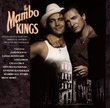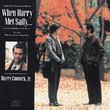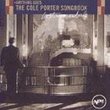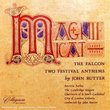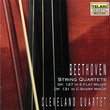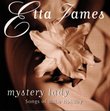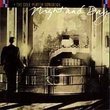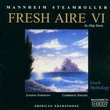| All Artists: Arvo Part, Neeme Järvi, Gothenburg Symphony Orchestra Title: Pärt: Tabula Rasa; Fratres; Symphony No. 3 Members Wishing: 1 Total Copies: 0 Label: Deutsche Grammophon Release Date: 9/14/1999 Genre: Classical Styles: Chamber Music, Forms & Genres, Concertos, Historical Periods, Classical (c.1770-1830), Instruments, Strings, Symphonies Number of Discs: 1 SwapaCD Credits: 1 UPC: 028945764726 |
Search - Arvo Part, Neeme Järvi, Gothenburg Symphony Orchestra :: Pärt: Tabula Rasa; Fratres; Symphony No. 3
 | Arvo Part, Neeme Järvi, Gothenburg Symphony Orchestra Pärt: Tabula Rasa; Fratres; Symphony No. 3 Genre: Classical
DG's beautifully packaged and produced 20/21 series here pays homage to Arvo Pärt, presenting a new interpretation of two of his most familiar works--already indisputable classics--Tabula Rasa and Fratres. For all of ... more » |
Larger Image |
CD DetailsSynopsis
Amazon.com DG's beautifully packaged and produced 20/21 series here pays homage to Arvo Pärt, presenting a new interpretation of two of his most familiar works--already indisputable classics--Tabula Rasa and Fratres. For all of their "minimalist" technique, there's a fathomless--call it timeless, if you will--beauty to these scores the deeper you plunge into their hypnotic sound world. The best place to discover them remains ECM's breakthrough release Tabula Rasa. Unlike Gidon Kremer (the superb interpreter of that recording), and despite an epiphany he mentions in the booklet--likening this music to the desert landscape of Utah--Gil Shaham doesn't seem to grasp one of the key components of that beauty: its austerity, its distance, as through a glass. There's an exquisite finish to his tone, to be sure, but Shaham essentially overromanticizes this music, coating it with a lovely but undifferentiated sheen, although he does hint at the vocal character of his lines. Passages of Fratres thus sound curiously tamed, as if we could be listening to such pastoral blandishments as The Lark Ascending or, in Tabula Rasa, to a Vivaldi andante. Despite this disappointment, the disc offers a thoroughly compelling account of the Third Symphony (1971) by its dedicatee, Neeme Järvi. It's fascinating to hear Pärt's points of origin--Soviet music, chant from the Orthodox Church, the fascination with bell sounds--so clearly delineated and transmogrified as in this work. Järvi molds its colorful but somber scoring into vividly dramatic shapes, hinting at Shostakovich in the chasm-deep bass lines tugging against the piercing treble or--as in the haunting opening solo--at the bleak majesty of a Sibelius landscape. The very success of Pärt's better-known works has tended to obscure the quality of such earlier pieces, but this performance helps widen the perspective to a more inclusive one. --Thomas May Similar CDs
Similarly Requested CDs
|
CD ReviewsTrascendental music Raul Saavedra | Caracas, Venezuela | 11/21/2003 (5 out of 5 stars) "I bought this Cd right before a driving trip I had to take alone. This was music I had never heard before, got it after a recommendation I had read online on an audiophile related webpage. Listening to this was almost a religious experience for me. Even though I was listening to it in my car while driving, not the best listening environment. This music, particularly the second part of Tabula Rasa (3rd track), is able to sort of grab and hypnotize your mind and soul in a very profound way. Later on I listened to it at home in my system, and fidelity just enhanced the magic of this most special music. I describe it as if a painter was able to paint in front of you peace and calm, balance and perfection, not using colors but just sound. Music from heaven." Entrance to another Realm Carolyn G. Billick | Denver, Co. USA | 01/05/2000 (5 out of 5 stars) "Exquisite sound , utterly and simply exquisite. I felt transported to another landscape. An inner land of the mind. Fratres moves you to anticipation for each new note. Tabula Rasa is profound sympathy for our earthly passions. Haunting and beautiful." Stunning... and better with every replay Xyp | Cincinnati, OH | 09/07/2005 (5 out of 5 stars) "I agree that there is a significant difference between Kremer and Shaham in interpreting the Tabula Rasa- and I'm not going to argue that one is better or worse, although I will definitely stipulate that the dedicatee of the work (Kremer) probably has a better handle on Part's original intentions through direct contact with him. As some people have previously mentioned, Kremer's reading (on ECM) is drier, with an emphasis on the bleakness and austerity that is so much a... well, part of Part.
However, I certainly can see where Shaham feels strong emotions in these pieces- his interpretation is more akin to floating. Yes, they are romanticized- they are strongly romantic pieces in their lonely sound. Don't make the mistake of discounting this performance based on reviews saying that Shaham's interpretation is "emotional". Kremer's interpretation is excellent, but I believe Shaham's is also excellent- albeit in a totally different way... and both are to be enjoyed for their strong points equally. Jarvi's leadership in the 3rd symphony is very powerful and completes this wonderful disc. In short this is great listening- I find myself coming back to this disc again and again... and it gets better with every replay." |

 Track Listings (6) - Disc #1
Track Listings (6) - Disc #1

